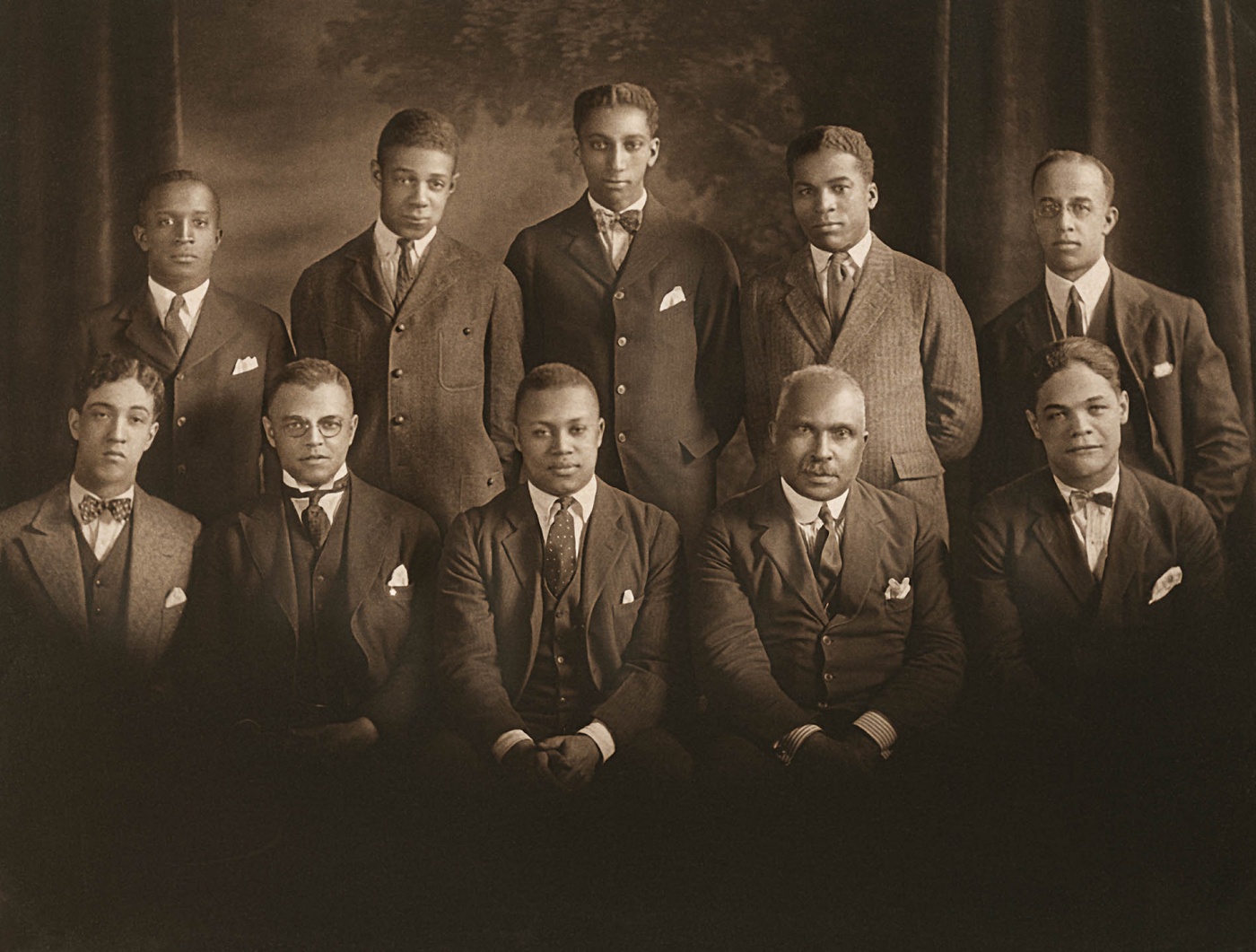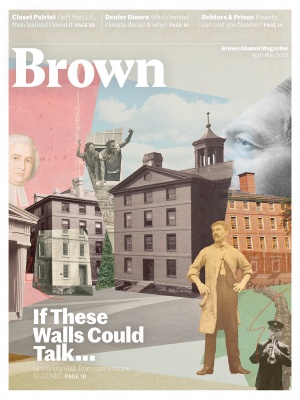In 1921, 11 men formed a chapter of Alpha Phi Alpha. (Pictured: the chapter in 1923.) Brown declined to recognize the group—the faculty objected, claiming “too many fraternities.” The students were undeterred. “These charter members were not first-generation college students,” says past president M. Rodney Robinson ’90. “They were the sons of doctors, lawyers, and teachers.” The students continued that success: four became doctors (Northwestern, Michigan, Howard), one a dentist (Harvard), two lawyers (Harvard, BU), one an educator, and two—Fritz Pollard ’19 and J. Mayo Williams ’20—NFL players (Pollard affiliated after graduation). “They did it with no Black deans, professors, Third World Center,” Robinson points out. “They only had each other.” Bottom row, from left: Roscoe E. Lewis ’25, Joseph G. LeCount (the first Black lawyer in R.I.), Joseph F. S. Carter ’24, Dr. J. J. Gilbert (a dentist in Prov.), Heber E. Wharton ’24; Top row: Louis L. Redding ’23 , Harold S. Fleming ’26, Joseph Chester Allen ’23, Samuel Byron Milton ’23, William A. Marks ’22.
History
Brown’s First Black Fraternity
The 11 men of Alpha Phi Alpha
By Louise Sloan '88 / April–May 2021
June 22nd, 2021

PHOTO: THE COLLECTION OF DR. IRVING ALLEN ’61




